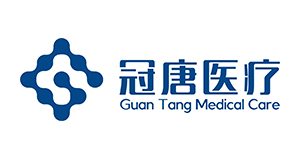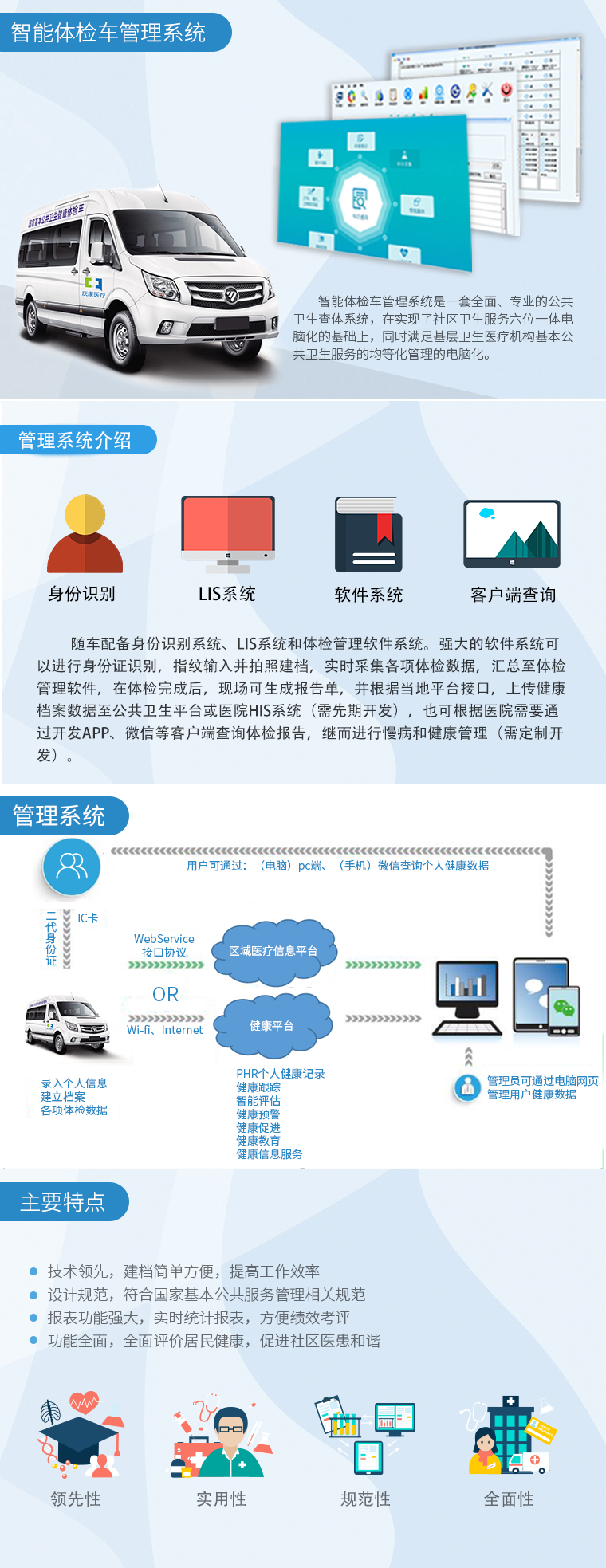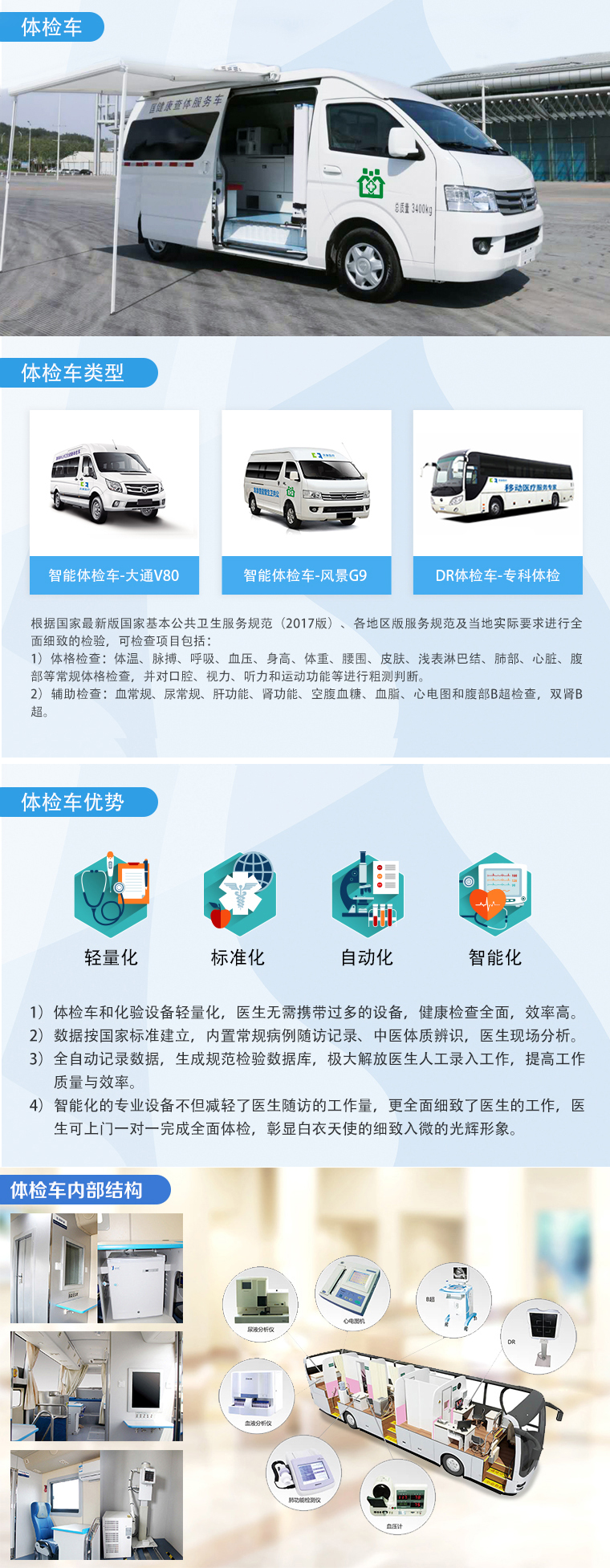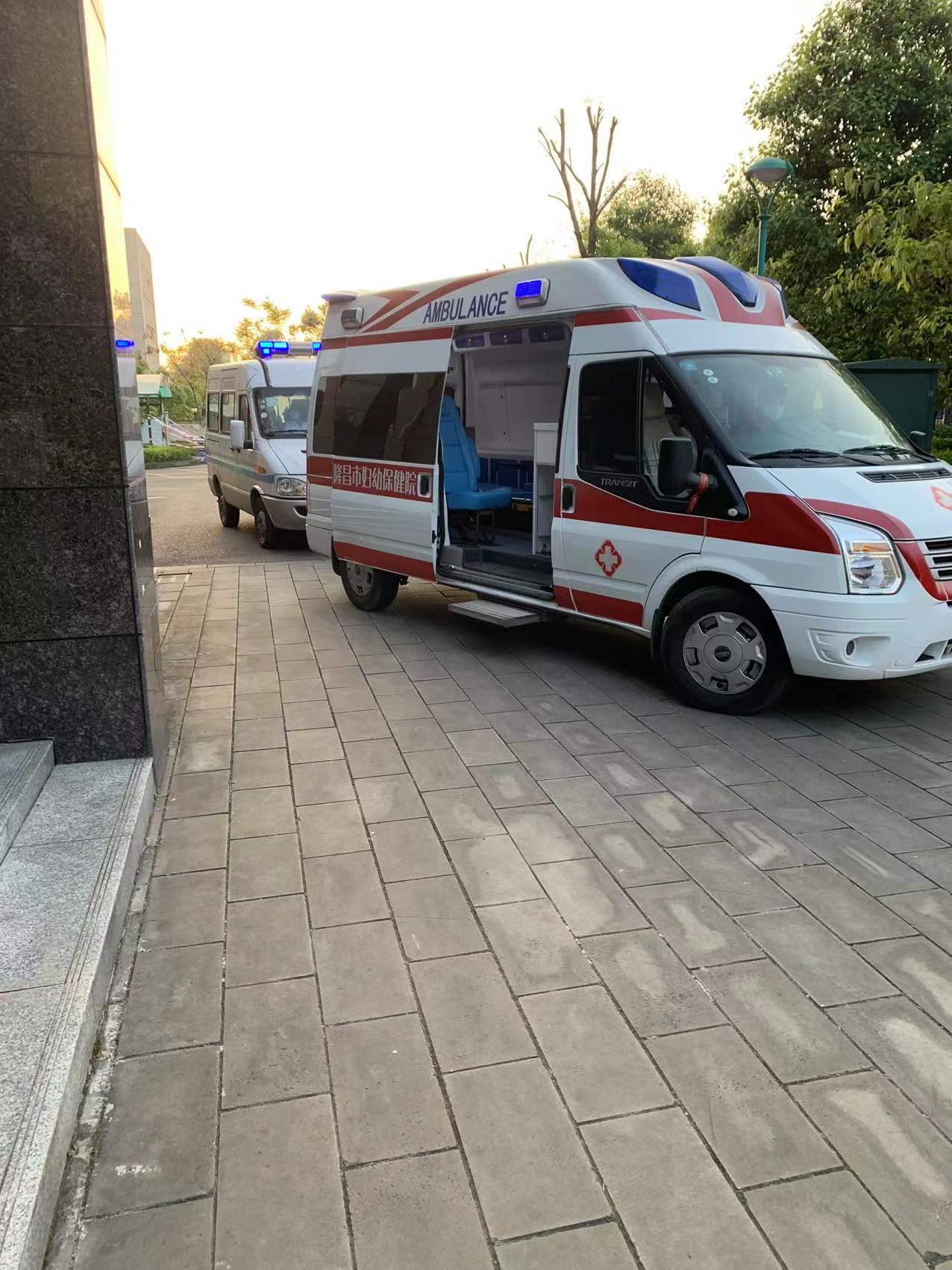實施案例
產品推薦
新聞推薦
健康小屋管理系統相關解析
- 2025-07-28
- http://www.daycoding.com/ 原創
- 130
健康小屋管理系統是依托信息化技術構建的健康管理平臺,通過整合硬件設備、軟件系統與數據服務,為社區、醫療機構及企事業單位提供便捷的健康監測與管理解決方案。該系統打破傳統健康管理的時空限制,實現健康數據的實時采集、分析與應用,在提升健康服務效率的同時,助力居民形成主動健康管理意識,成為基層健康服務體系的重要補充。
The Health Cabin Management System is a health management platform built on information technology, which integrates hardware devices, software systems, and data services to provide convenient health monitoring and management solutions for communities, medical institutions, and enterprises. This system breaks the temporal and spatial limitations of traditional health management, enabling real-time collection, analysis, and application of health data. While improving the efficiency of health services, it also helps residents form an active awareness of health management and becomes an important supplement to the grassroots health service system.
系統的核心功能圍繞健康數據的全流程管理展開,涵蓋數據采集、存儲、分析及干預建議等環節。數據采集環節通過對接健康小屋內的檢測設備(如血壓儀、血糖儀、體脂秤、心電圖機),實現身高、體重、血壓、血糖等基礎健康指標的自動錄入(誤差控制在行業標準范圍內),避免人工記錄的誤差。部分系統支持居民自助操作,通過身份證或人臉識別登錄,完成檢測后數據即時上傳至云端數據庫,確保信息實時更新。數據存儲采用加密技術(符合數據安全規范),對居民健康信息進行分級保護,僅授權人員(如社區醫生、居民本人)可查看,保障隱私安全。分析功能則通過算法模型對連續采集的數據進行趨勢分析,例如識別血壓值的波動規律(如晨間高血壓、季節性變化),生成個性化健康報告,當指標異常時(如血糖值超過正常范圍)自動發出預警,提醒居民及時就醫或調整生活方式。
The core function of the system revolves around the full process management of health data, covering data collection, storage, analysis, and intervention recommendations. The data collection process automatically records basic health indicators such as height, weight, blood pressure, and blood sugar (with errors controlled within industry standards) by connecting with detection equipment in the health cabin, such as blood pressure monitors, blood glucose meters, body fat scales, and electrocardiographs, to avoid manual recording errors. Some systems support residents' self-service operations, logging in through ID card or facial recognition, and uploading the data to the cloud database immediately after completing the detection to ensure real-time information updates. The data storage adopts encryption technology (in compliance with data security standards) to provide graded protection for residents' health information, which can only be viewed by authorized personnel (such as community doctors and residents themselves) to ensure privacy and security. The analysis function uses algorithm models to perform trend analysis on continuously collected data, such as identifying the fluctuation patterns of blood pressure values (such as morning high blood pressure, seasonal changes), generating personalized health reports, and automatically issuing warnings when indicators are abnormal (such as blood sugar levels exceeding the normal range), reminding residents to seek medical attention or adjust their lifestyle in a timely manner.
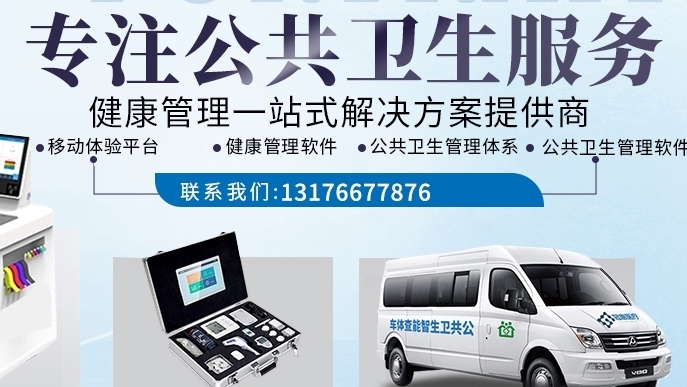
系統的組成架構分為硬件層、軟件層與服務層,各層級協同運作保障系統穩定。硬件層包括各類檢測設備與終端設備(如觸控一體機、打印機),設備需具備標準化數據接口,確保與系統的兼容性(支持藍牙、Wi-Fi 或有線連接),部分高端設備可實現多參數同步檢測(如一次操作完成血壓、心率、血氧的聯合監測)。軟件層是系統的核心,包含用戶管理模塊(居民檔案建立與維護)、檢測管理模塊(設備連接與數據處理)、報表管理模塊(健康報告生成與打印)及權限管理模塊(不同角色的操作權限劃分),界面設計注重易用性,適合老年人等非專業用戶操作(字體可放大、步驟簡化)。服務層則提供線下支持,如設備定期校準(確保檢測數據準確)、系統升級維護、醫生在線咨詢對接等,部分系統還接入區域醫療平臺,實現與醫院電子病歷的互聯互通,方便居民轉診時的信息共享。
The composition architecture of the system is divided into hardware layer, software layer, and service layer, and the coordinated operation of each layer ensures the stability of the system. The hardware layer includes various detection devices and terminal devices (such as touch all-in-one machines and printers), which need to have standardized data interfaces to ensure compatibility with the system (supporting Bluetooth, Wi Fi, or wired connections). Some high-end devices can achieve multi parameter synchronous detection (such as joint monitoring of blood pressure, heart rate, and blood oxygen in one operation). The software layer is the core of the system, including user management module (establishment and maintenance of resident files), detection management module (device connection and data processing), report management module (generation and printing of health reports), and permission management module (division of operation permissions for different roles). The interface design focuses on usability and is suitable for non professional users such as the elderly to operate (font can be enlarged, steps simplified). The service layer provides offline support, such as regular device calibration (to ensure accurate detection data), system upgrade and maintenance, online consultation and docking with doctors, etc. Some systems are also connected to regional medical platforms to achieve interconnectivity with hospital electronic medical records, facilitating information sharing during resident referrals.
在應用場景中,健康小屋管理系統的靈活性使其能適應不同需求。社區健康小屋通過該系統為轄區居民提供常態化健康監測,尤其適合老年人、慢性病患者(如高血壓、糖尿病患者)定期隨訪,醫生可通過系統查看患者的歷史數據,制定更精準的干預方案(如調整用藥建議)。企事業單位的健康小屋則側重員工健康管理,系統可生成團體健康報告,分析員工群體的健康風險(如頸椎問題、亞健康比例),為企業組織健康講座、優化工作環境提供數據支持。在偏遠地區,系統通過簡化版終端設備實現基礎健康數據采集,再通過網絡傳輸至縣級醫療機構,助力優質醫療資源下沉,緩解基層醫療服務壓力。此外,系統還可應用于健康促進活動,如記錄居民參與運動、膳食指導的情況,結合檢測數據評估干預效果,形成 “監測 - 干預 - 再監測” 的閉環管理。
In application scenarios, the flexibility of the health cabin management system enables it to adapt to different needs. Through this system, the community health hut provides residents with regular health monitoring, especially for the elderly and patients with chronic diseases (such as hypertension and diabetes). Doctors can view the historical data of patients through the system and develop more accurate intervention plans (such as adjusting medication recommendations). The health cabin of enterprises and institutions focuses on employee health management. The system can generate group health reports, analyze the health risks of employee groups (such as cervical problems and sub-health ratios), and provide data support for organizing health lectures and optimizing work environments for enterprises. In remote areas, the system collects basic health data through simplified terminal devices, and then transmits it to county-level medical institutions through the network, helping to sink high-quality medical resources and alleviate the pressure of grassroots medical services. In addition, the system can also be applied to health promotion activities, such as recording residents' participation in sports and dietary guidance, evaluating intervention effects based on detection data, and forming a closed-loop management of "monitoring intervention re monitoring".
本文由健康小屋管理系統友情奉獻.更多有關的知識請點擊:http://www.daycoding.com我們將會對您提出的疑問進行詳細的解答,歡迎您登錄網站留言.
This article is a friendly contribution from the occupational disease examination system For more information, please click: http://www.daycoding.com We will provide detailed answers to your questions. You are welcome to log in to our website and leave a message.
